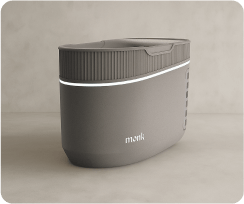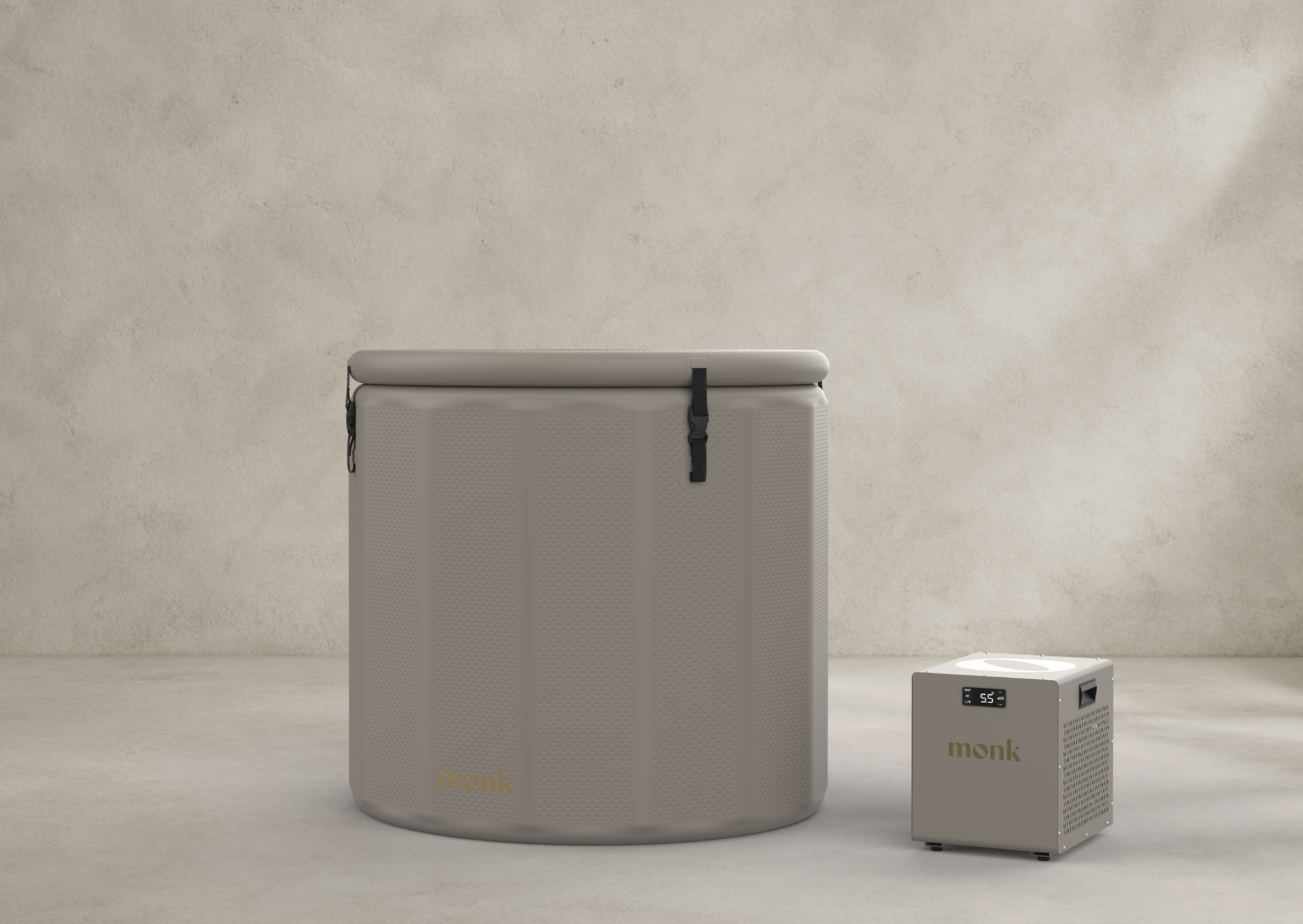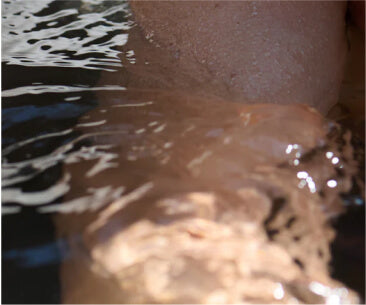Pain management benefits of cold water
Pain is an inevitable part of life… right? No pain no gain, as the saying goes for those of us driving for next level living and performance. But while it’s true that pain serves an important purpose in our bodies, sometimes it screws up. Athletes know too well how DOMS (delayed onset muscle soreness) makes progress frustratingly slow, and those recovering from major surgery or living with chronic pain conditions will understand how debilitating and disheartening it is to have your body constantly tell you that something feels wrong.
Popping painkillers has become our first response to pain. For some it’s a lifeline, but many of us long for another way. Excitingly, research has found one: cold water therapy, a pain-relief revolution that taps into some of our most base physiological responses to put pain back in line.
What is pain and why do we experience it?
Every person experiences pain differently, but the mechanisms are universal. Pain is a sensation we feel when sensory cells called nociceptors communicate with our brain as a result of threatening stimuli, either internal or external. Because pain is essentially the result of signals, our bodies and brains have also developed ways to temper feelings of pain by reducing or even preventing the signals reaching our brain.
As much as we may hate it in the moment, pain serves us. It’s there for our survival, to tell us when something is wrong and we need to take action. It follows inflammation, which is our body’s first-line defence against disease and injury, where damaged cells start producing chemicals to stimulate healing, but as with many processes in the body, it can also become dysfunctional.
How can Cold Water Therapy help with managing pain?
Cold temperatures slow the conduction velocity of peripheral nerves (those outside our brain and spinal cord) which helps dull or even override feelings of pain. It’s just one of the reasons bags of frozen peas are still a household go-to for aches and sprains. Cold numbs nerve endings at the site of injury, which decreases their ability to send pain signals.
It can also treat pain by helping reduce the swelling caused by inflammation called edema, where fluid builds up in damaged tissue, leaked from our blood vessels. Cold causes vasoconstriction, constricting the blood vessels and slowing down the metabolism of the cells, which in turn reduces the amount of swelling. The many cold-sensitive thermoreceptor cells in our skin also fire up and send electrical impulses to our brain which have a pain-relieving effect.
Temperature contrast plays a role in the revolutionary effects of cold water therapy on pain too: when you sit in cold water, your blood vessels constrict to minimise heat loss from the body. When you get out, they dilate (open back up). This process is vital because our lymphatic system - our internal waste disposal network - doesn’t have its own pump, like the heart for our cardiovascular system. It relies on movement, so cold exposure that constricts and dilates our blood vessels helps keep our lymphatic system running, as well as flooding our cells with nutrients and oxygen (lack of which has been linked with pain in fibromyalgia patients).
Managing pain in sports recovery / injuries with Cold Water Therapy
If you’re an athlete, whether you’re a full-time game changer or weekend warrior, you’ll already know the power of ice in pushing through pain for progress. But if you’re like us, we know you’ll want the details so you can harness cold exposure more intelligently for even greater performance. We’ve already covered the general mechanisms by which cold exposure aids pain management for muscle recovery or injury, but how can you optimise it, and are there any risks to performance for different methods? Studies have shown that cold exposure following exercise:
- supports muscle oxygenation and reduces subsequent soreness
- reduces edema, inflammation, muscle spasm and metabolic demand
- is most effective at reducing pain signals with total immersion (like an ice bath)
- Is most effective at reducing DOMS pain when applied within 1 hour of exercise ideally, but also within 24 hours of exercise
In one randomised controlled trial of soft tissue injuries, 20 minutes was found to be the optimal exposure time for reducing pain and improving joint mobility while avoiding discomfort, so keep an eye on the clock next time you’re icing a rolled ankle.
If you want a deeper dive into the science of cold water therapy for muscle recovery and performance, we’ve got you.
Managing back pain and post-surgical pain with Cold Water Therapy
Around 8% of people live with lower back pain across the world, and it’s a leading cause of years lived with disability (YLDs). At the same time, lack of understanding about lower back pain being an injury that requires a cure means improvement is hampered by an over-reliance on rest and medication, when activity is what the body needs. Cold therapy, when combined with heat therapy, has been shown to reduce pain when used long-term to manage lower back pain.
Post-surgery pain is another area where cold exposure is seen to help improve outcomes for patients who otherwise would only have the option of prescription painkillers to manage the pain. Studies looking at anterior cruciate ligament reconstruction surgery, total knee arthroplasty, and elbow arthrolysis saw patients who were treated with cryotherapy experience less pain, as well as reduce use of pain relief medication.
With evidence that cold therapy helps reduce pain and stimulates blood flow to replenish your organs and tissue with oxygen and nutrients, cold water therapy holds special promise for those either facing or experiencing the challenge of post-surgical recovery.
Managing pain in chronic conditions like arthritis and fibromyalgia with Cold Water Therapy
Even processes evolved for our survival can become dysfunctional, as is often experienced by people living with chronic pain conditions like rheumatoid arthritis and fibromyalgia. Living with pain every day can be overwhelming and disheartening, especially when the causes still elude scientists. Pain-managing medication becomes a daily part of life, often along with unwanted side effects, so exploring alternatives is a personal priority for many people treating and living with the conditions.
Where cold therapy has been found to reduce inflammation and edema, arthritis researchers have been especially interested to see how far it can help people’s symptoms. One Finnish study found that patients with inflammatory arthritis saw significant improvement in their pain after a week-long course of whole body cold mist showers, as well as better sleep quality with no significant side effects. Another study treating rheumatoid arthritis patients with whole body cold therapy alongside physiotherapy found pain decreased, with the best results for those having cold therapy at -110oc. What’s more, in the group treated with cold therapy, markers of systemic inflammation called C-reactive proteins were significantly reduced, suggesting that cold exposure in particular had a whole body anti-inflammatory effect. Levels of uric acid, a waste product in the body that can cause a form of arthritis called gout (and contributes to osteoarthritis), has been found decreased in wild winter swimmers, which may offer another reason why people with arthritis have taken to wild swimming for pain management.
Fibromyalgia is a different challenge for scientists and those who live with it: it’s a condition of the central nervous system, with no single location of pain. This makes it difficult to diagnose, and there is no single drug to treat the symptoms. Fortunately, cold exposure may hold the key to pain relief: one study of regular winter swimmers found that those with fibromyalgia reported reduced pain, as well as improved mood, tension, fatigue and memory as a result of their chilly practice. Stress is central to the onset and worsening of fibromyalgia symptoms, and chronic stress disrupts our dopamine system which plays an important role in our internal pain relief system. Paired with evidence that cold water therapy was able to increase plasma dopamine concentrations by 250%, the pathway between fibromyalgia pain management and cold water therapy is made clear.
If you want more of the science behind cold water therapy, inflammation and our immune system, this post on the immunity benefits of cold water is for you. If you’re fascinated by neurotransmitters, hormones and how our brains benefit from an icy cold plunge, check out this write-up on cold water therapy for mental health.
Ready to take the plunge?
Getting the benefits of cold water therapy doesn’t have to start with stripping off and throwing yourself in your local pond tomorrow morning (but we do love that energy). You can start by turning the temperature down at the end of your daily shower for 1-2 minutes, making it longer each time. You can also jump in a cold water bath to ramp it up.






